Journal Description
Symmetry
Symmetry
is an international, peer-reviewed, open access journal covering research on symmetry/asymmetry phenomena wherever they occur in all aspects of natural sciences. Symmetry is published monthly online by MDPI.
- Open Access— free for readers, with article processing charges (APC) paid by authors or their institutions.
- High Visibility: indexed within Scopus, SCIE (Web of Science), CAPlus / SciFinder, Inspec, Astrophysics Data System, and other databases.
- Journal Rank: JCR - Q2 (Multidisciplinary Sciences) / CiteScore - Q1 (General Mathematics)
- Rapid Publication: manuscripts are peer-reviewed and a first decision is provided to authors approximately 14.7 days after submission; acceptance to publication is undertaken in 3.7 days (median values for papers published in this journal in the first half of 2023).
- Recognition of Reviewers: reviewers who provide timely, thorough peer-review reports receive vouchers entitling them to a discount on the APC of their next publication in any MDPI journal, in appreciation of the work done.
- Sections: published in 6 topical sections.
- Testimonials: See what our editors and authors say about Symmetry.
Impact Factor:
2.7 (2022);
5-Year Impact Factor:
2.7 (2022)
Latest Articles
Field-Theoretic Renormalization Group in Models of Growth Processes, Surface Roughening and Non-Linear Diffusion in Random Environment: Mobilis in Mobili
Symmetry 2023, 15(8), 1556; https://doi.org/10.3390/sym15081556 - 08 Aug 2023
Abstract
This paper is concerned with intriguing possibilities for non-conventional critical behavior that arise when a nearly critical strongly non-equilibrium system is subjected to chaotic or turbulent motion of the environment. We briefly explain the connection between the critical behavior theory and the quantum
[...] Read more.
This paper is concerned with intriguing possibilities for non-conventional critical behavior that arise when a nearly critical strongly non-equilibrium system is subjected to chaotic or turbulent motion of the environment. We briefly explain the connection between the critical behavior theory and the quantum field theory that allows the application of the powerful methods of the latter to the study of stochastic systems. Then, we use the results of our recent research to illustrate several interesting effects of turbulent environment on the non-equilibrium critical behavior. Specifically, we couple the Kazantsev–Kraichnan “rapid-change” velocity ensemble that describes the environment to the three different stochastic models: the Kardar–Parisi–Zhang equation with time-independent random noise for randomly growing surface, the Hwa–Kardar model of a “running sandpile” and the generalized Pavlik model of non-linear diffusion with infinite number of coupling constants. Using field-theoretic renormalization group analysis, we show that the effect can be quite significant leading to the emergence of induced non-linearity or making the original anisotropic scaling appear only through certain “dimensional transmutation”.
Full article
(This article belongs to the Special Issue Review on Quantum Field Theory)
Open AccessArticle
Making the Most of 3D Electron Diffraction: Best Practices to Handle a New Tool
by
, , , , , , , , , , , , , , and
Symmetry 2023, 15(8), 1555; https://doi.org/10.3390/sym15081555 - 08 Aug 2023
Abstract
Along with the adoption of three-dimensional electron diffraction (3D ED/MicroED) as a mainstream tool for structure determination from sub-micron single crystals, questions about best practices regarding each step along the workflow, from data collection to structure solutions, arise. In this paper, we discuss
[...] Read more.
Along with the adoption of three-dimensional electron diffraction (3D ED/MicroED) as a mainstream tool for structure determination from sub-micron single crystals, questions about best practices regarding each step along the workflow, from data collection to structure solutions, arise. In this paper, we discuss three particular aspects of a 3D ED/MicroED experiment which, after hundreds of structures solved in Rigaku’s laboratories, we have found to be important to consider carefully. First, for a representative model system of a hydrated compound (trehalose dihydrate), we show that cryo-transfer of the sample into the diffractometer is an effective means to prevent dehydration, while cooling of the sample without cryo-transfer yields a marginal improvement only. Next, we demonstrate for a small (tyrosine) and a large (clarithromycin) organic compound, how a simplified and fast workflow for dynamical diffraction calculations can determine absolute crystal structures with high confidence. Finally, we discuss considerations and trade-offs for choosing an optimal effective crystal-to-detector distance; while a long distance is mandatory for a protein (thaumatin) example, even a small molecule with difficult diffraction behavior (cystine) yields superior results at longer distances than the one used by default.
Full article
(This article belongs to the Special Issue Electron Diffraction and Structural Imaging II)
►▼
Show Figures
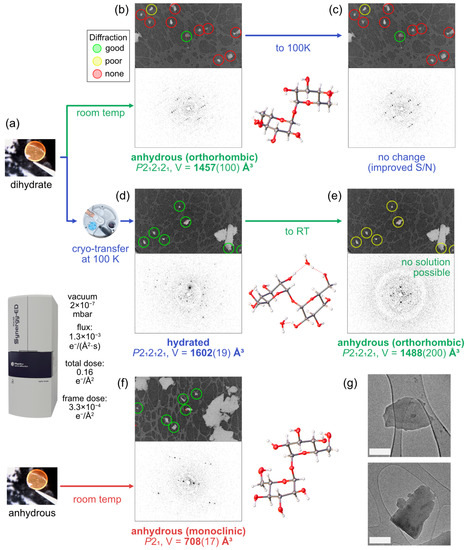
Figure 1
Open AccessArticle
Excitation Function of Freeze-Out Parameters in Symmetric Nucleus–Nucleus and Proton–Proton Collisions at the Same Collision Energy
by
, , , , , , and
Symmetry 2023, 15(8), 1554; https://doi.org/10.3390/sym15081554 - 08 Aug 2023
Abstract
We analyze the transverse momentum (
(This article belongs to the Section Physics and Symmetry/Asymmetry)
►▼
Show Figures
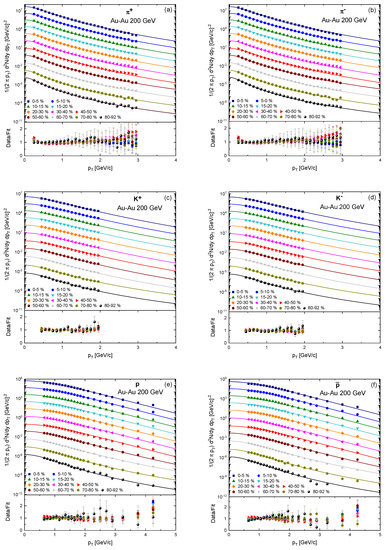
Figure 1
Open AccessArticle
Certain Results on the Lifts from an LP-Sasakian Manifold to Its Tangent Bundle Associated with a Quarter-Symmetric Metric Connection
Symmetry 2023, 15(8), 1553; https://doi.org/10.3390/sym15081553 - 08 Aug 2023
Abstract
The purpose of this study is to examine the complete lifts from the symmetric and concircular symmetric n-dimensional Lorentzian para-Sasakian manifolds (briefly,
The purpose of this study is to examine the complete lifts from the symmetric and concircular symmetric n-dimensional Lorentzian para-Sasakian manifolds (briefly,
(This article belongs to the Special Issue Symmetry and Its Application in Differential Geometry and Topology II)
Open AccessArticle
Theoretical Aspects for Bayesian Predictions Based on Three-Parameter Burr-XII Distribution and Its Applications in Climatic Data
Symmetry 2023, 15(8), 1552; https://doi.org/10.3390/sym15081552 - 07 Aug 2023
Abstract
Symmetry and asymmetry play vital roles in prediction. Symmetrical data, which follows a predictable pattern, is easier to predict compared to asymmetrical data, which lacks a predictable pattern. Symmetry helps identify patterns within data that can be utilized in predictive models, while asymmetry
[...] Read more.
Symmetry and asymmetry play vital roles in prediction. Symmetrical data, which follows a predictable pattern, is easier to predict compared to asymmetrical data, which lacks a predictable pattern. Symmetry helps identify patterns within data that can be utilized in predictive models, while asymmetry aids in identifying outliers or anomalies that should be considered in the predictive model. Among the various factors associated with storms and their impact on surface temperatures, wind speed stands out as a significant factor. This paper focuses on predicting wind speed by utilizing unified hybrid censoring data from the three-parameter Burr-XII distribution. Bayesian prediction bounds for future observations are obtained using both one-sample and two-sample prediction techniques. As explicit expressions for Bayesian predictions of one and two samples are unavailable, we propose the use of the Gibbs sampling process in the Markov chain Monte Carlo framework to obtain estimated predictive distributions. Furthermore, we present a climatic data application to demonstrate the developed uncertainty procedures. Additionally, a simulation research is carried out to examine and contrast the effectiveness of the suggested methods. The results reveal that the Bayes estimates for the parameters outperformed the Maximum likelihood estimators.
Full article
(This article belongs to the Special Issue Skewed (Asymmetrical) Probability Distributions and Applications across Disciplines Ⅲ)
►▼
Show Figures
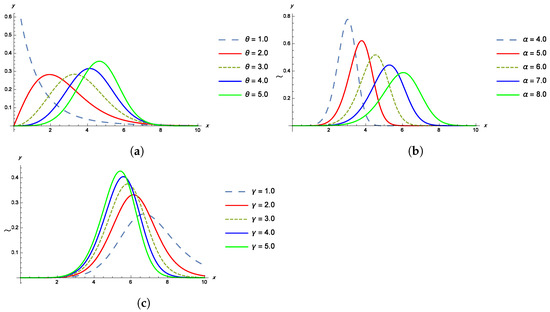
Figure 1
Open AccessArticle
A New Class of Trigonometric B-Spline Curves
Symmetry 2023, 15(8), 1551; https://doi.org/10.3390/sym15081551 - 07 Aug 2023
Abstract
We construct one-frequency trigonometric spline curves with a de Boor-like algorithm for evaluation and analyze their shape-preserving properties. The convergence to quadratic B-spline curves is also analyzed. A fundamental tool is the concept of the normalized B-basis, which has optimal shape-preserving properties and
[...] Read more.
We construct one-frequency trigonometric spline curves with a de Boor-like algorithm for evaluation and analyze their shape-preserving properties. The convergence to quadratic B-spline curves is also analyzed. A fundamental tool is the concept of the normalized B-basis, which has optimal shape-preserving properties and good symmetric properties.
Full article
(This article belongs to the Special Issue Computer-Aided Geometric Design and Matrices)
►▼
Show Figures

Figure 1
Open AccessReview
Chiral Organophosphorus Pharmaceuticals: Properties and Application
Symmetry 2023, 15(8), 1550; https://doi.org/10.3390/sym15081550 - 07 Aug 2023
Abstract
This review considers the chiral phosphorus-containing drugs used to treat patients in the clinic, as well as the promising and experimental drugs that are in the process of being researched. Natural and synthetic representatives of phosphorus-containing drugs, such as tenofovir (hepatitis B and
[...] Read more.
This review considers the chiral phosphorus-containing drugs used to treat patients in the clinic, as well as the promising and experimental drugs that are in the process of being researched. Natural and synthetic representatives of phosphorus-containing drugs, such as tenofovir (hepatitis B and HIV treatment), fosfomycin (antibiotic), valinofos (antibiotic), phosphazinomycin A (antibiotic), (R)-phospholeucine, various antibacterial and antifungal agents, renin inhibitors, etc., have found practical applications as medicines and bioregulators and other medicines. The influence of the chirality of both carbon atoms and phosphorus atoms on the pharmacodynamics, pharmacokinetics, and toxicological properties of phosphorus drugs has been demonstrated. Therefore, the choice of enantiomers is critical since the wrong choice of a chiral drug can lead to undesirable consequences, carcinogenicity, and teratogenicity. New chiral technologies affecting drug development are discussed, such as the “chiral switch” of racemates already on the market, as well as phosphorus-containing prodrugs with a higher biological selectivity and low adverse effects.
Full article
(This article belongs to the Special Issue Symmetry/Asymmetry: Feature Review Papers)
►▼
Show Figures
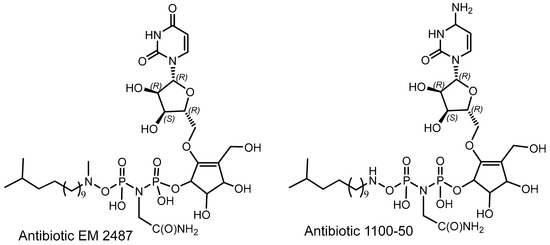
Figure 1
Open AccessArticle
A Station-Keeping Control Strategy for a Symmetrical Spacecraft Utilizing Hybrid Low-Thrust Propulsion in the Heliocentric Displaced Orbit
Symmetry 2023, 15(8), 1549; https://doi.org/10.3390/sym15081549 - 06 Aug 2023
Abstract
The solar sail spacecraft utilizing a hybrid approach of solar sail and solar electric propulsion in the heliocentric displaced orbit is affected by external disturbances, internal unmodeled dynamics, initial injection errors, and input saturation. To solve the station-keeping control problem under such complex
[...] Read more.
The solar sail spacecraft utilizing a hybrid approach of solar sail and solar electric propulsion in the heliocentric displaced orbit is affected by external disturbances, internal unmodeled dynamics, initial injection errors, and input saturation. To solve the station-keeping control problem under such complex conditions, an adaptive control strategy is proposed. First, the dynamical equations of the spacecraft utilizing hybrid low-thrust propulsion in the cylindrical coordinate system are derived. Second, the combined disturbance acceleration introduced by external disturbances and internal unmodeled dynamics is constructed, and a radial basis function neural network estimator is designed to estimate it online in real time. Third, an adaptive high-performance station-keeping controller based on an improved integral sliding surface and multivariate super-twisting sliding mode approaching law is designed. Then, stability analysis is conducted using Lyapunov theory, adaptive laws are designed, and the introduced virtual control accelerations are converted into actual control variables. Finally, simulations are conducted under different simulation conditions based on the disturbance sources. The results show that although the use of hybrid low-thrust propulsion breaks the symmetry of the solar sail in configuration, the proposed control strategy can effectively achieve the station-keeping and disturbance estimation of the spacecraft with only a small amount of propellant consumed and position tracking errors up to decimeters.
Full article
(This article belongs to the Special Issue Advances in Mechanics and Control II)
►▼
Show Figures
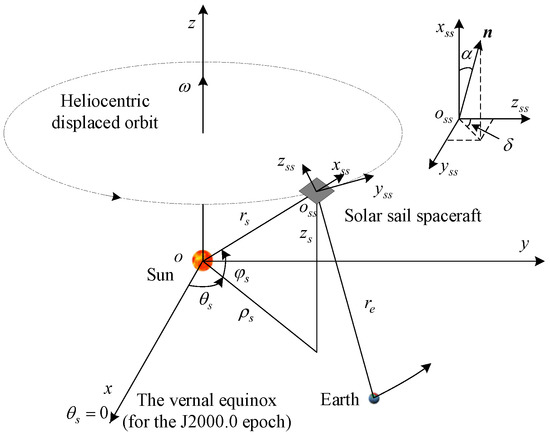
Figure 1
Open AccessFeature PaperArticle
Results of Hyperbolic Ricci Solitons
by
and
Symmetry 2023, 15(8), 1548; https://doi.org/10.3390/sym15081548 - 06 Aug 2023
Abstract
We obtain some properties of a hyperbolic Ricci soliton with certain types of potential vector fields, and we point out some conditions when it reduces to a trivial Ricci soliton. We also study those soliton submanifolds whose vector fields are the tangential components
[...] Read more.
We obtain some properties of a hyperbolic Ricci soliton with certain types of potential vector fields, and we point out some conditions when it reduces to a trivial Ricci soliton. We also study those soliton submanifolds whose vector fields are the tangential components of a concurrent vector field on the ambient manifold, and in particular, we show that a totally umbilical hyperbolic Ricci soliton is an Einstein manifold. We prove that if the hyperbolic Ricci soliton hypersurface of a Riemannian manifold of constant curvature and endowed with a concurrent vector field has a parallel shape operator, then it is a metallic-shaped hypersurface, and we determine some conditions for it to be minimal. Moreover, we show that it is also a pseudosymmetric hypersurface.
Full article
Open AccessArticle
Anchored and Lifted Diffusion Flames Supported by Symmetric and Asymmetric Edge Flames
by
and
Symmetry 2023, 15(8), 1547; https://doi.org/10.3390/sym15081547 - 06 Aug 2023
Abstract
Numerous combustion applications are concerned with the stabilization of diffusion flames formed by injecting gaseous fuels into a co-flowing stream containing an oxidizer. The smooth operation of these devices depends on the attachment and lift-off characteristics of the edge flame at the base
[...] Read more.
Numerous combustion applications are concerned with the stabilization of diffusion flames formed by injecting gaseous fuels into a co-flowing stream containing an oxidizer. The smooth operation of these devices depends on the attachment and lift-off characteristics of the edge flame at the base of the diffusion flame. In this paper, we address fundamental issues pertinent to the structure and dynamics of edge flames, which have attributes of both premixed and diffusion flames. The adopted configuration is the mixing layer established in the wake of a splitter plate where two streams, one containing fuel and the other oxidizer, merge. The analysis employs a diffusive-thermal model which, although it excludes effects of gas expansion, systematically includes the influences of the overall flow rate, unequal strain rates in the incoming streams, stoichiometry, differential and preferential diffusion, heat loss and gas–solid thermal interaction, and their effect on the edge structure, speed, and temperature. Conditions when the edge flame is anchored to the plate, lifted-off and stabilized in the flow, or blown-off, are identified. Two stable modes of stabilization are observed for lifted flames; the edge flame either remains stationary at a specified location or undergoes spontaneous oscillations along a direction that coincides with the trailing diffusion flame.
Full article
(This article belongs to the Special Issue Symmetry and Symmetry-Breaking in Fluid Dynamics)
►▼
Show Figures
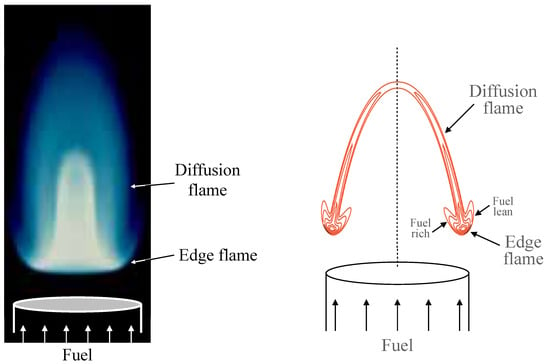
Figure 1
Open AccessArticle
Efficient Families of Multi-Point Iterative Methods and Their Self-Acceleration with Memory for Solving Nonlinear Equations
Symmetry 2023, 15(8), 1546; https://doi.org/10.3390/sym15081546 - 06 Aug 2023
Abstract
In this paper, we have constructed new families of derivative-free three- and four-parametric methods with and without memory for finding the roots of nonlinear equations. Error analysis verifies that the without-memory methods are optimal as per Kung–Traub’s conjecture, with orders of convergence of
[...] Read more.
In this paper, we have constructed new families of derivative-free three- and four-parametric methods with and without memory for finding the roots of nonlinear equations. Error analysis verifies that the without-memory methods are optimal as per Kung–Traub’s conjecture, with orders of convergence of 4 and 8, respectively. To further enhance their convergence capabilities, the with-memory methods incorporate accelerating parameters, elevating their convergence orders to 7.5311 and 15.5156, respectively, without introducing extra function evaluations. As such, they exhibit exceptional efficiency indices of 1.9601 and 1.9847, respectively, nearing the maximum efficiency index of 2. The convergence domains are also analysed using the basins of attraction, which exhibit symmetrical patterns and shed light on the fascinating interplay between symmetry, dynamic behaviour, the number of diverging points, and efficient root-finding methods for nonlinear equations. Numerical experiments and comparison with existing methods are carried out on some nonlinear functions, including real-world chemical engineering problems, to demonstrate the effectiveness of the new proposed methods and confirm the theoretical results. Notably, our numerical experiments reveal that the proposed methods outperform their existing counterparts, offering superior precision in computation.
Full article
(This article belongs to the Special Issue The Advances of Nonlinear Equations: Mathematical Models, Symmetry and Applications)
►▼
Show Figures
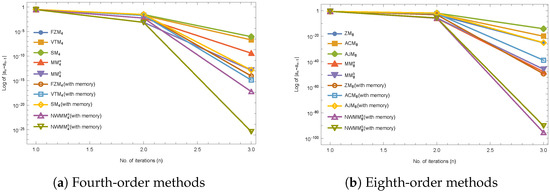
Figure 1
Open AccessArticle
An Extended Vector Polar Histogram Method Using Omni-Directional LiDAR Information
Symmetry 2023, 15(8), 1545; https://doi.org/10.3390/sym15081545 - 05 Aug 2023
Abstract
This study presents an extended vector polar histogram (EVPH) method for efficient robot navigation using omni-directional LiDAR data. Although the conventional vector polar histogram (VPH) method is a powerful technique suitable for LiDAR sensors, it is limited in its sensing range by the
[...] Read more.
This study presents an extended vector polar histogram (EVPH) method for efficient robot navigation using omni-directional LiDAR data. Although the conventional vector polar histogram (VPH) method is a powerful technique suitable for LiDAR sensors, it is limited in its sensing range by the single LiDAR sensor to a semicircle. To address this limitation, the EVPH method incorporates multiple LiDAR sensor’s data for omni-directional sensing. First off, in the EVPH method, the LiDAR sensor coordinate systems are directly transformed into the robot coordinate system to obtain an omni-directional polar histogram. Several techniques are also employed in this process, such as minimum value selection and linear interpolation, to generate a uniform omni-directional polar histogram. The resulting histogram is modified to represent the robot as a single point. Subsequently, consecutive points in the histogram are grouped to construct a symbol function for excluding concave blocks and a threshold function for safety. These functions are combined to determine the maximum cost value that generates the robot’s next heading angle. Robot backward motion is made feasible based on the determined heading angle, enabling the calculation of the velocity vector for time-efficient and collision-free navigation. To assess the efficacy of the proposed EVPH method, experiments were carried out in two environments where humans and obstacles coexist. The results showed that, compared to the conventional method, the robot traveled safely and efficiently in terms of the accumulated amount of rotations, total traveling distance, and time using the EVPH method. In the future, our plan includes enhancing the robustness of the proposed method in congested environments by integrating parameter adaptation and dynamic object estimation methods.
Full article
(This article belongs to the Special Issue Unmanned Vehicles, Automation, and Robotics)
►▼
Show Figures
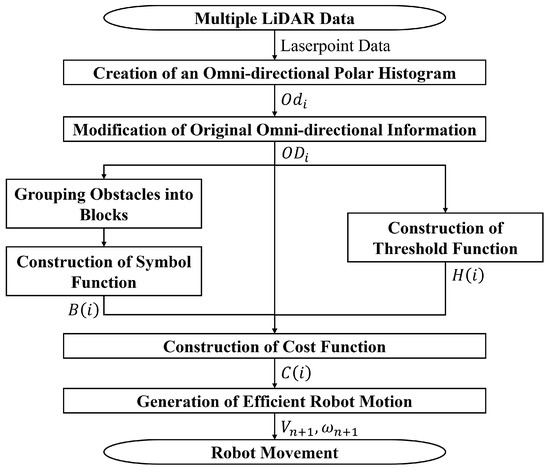
Figure 1
Open AccessArticle
New Results on a Fractional Integral of Extended Dziok–Srivastava Operator Regarding Strong Subordinations and Superordinations
Symmetry 2023, 15(8), 1544; https://doi.org/10.3390/sym15081544 - 05 Aug 2023
Abstract
In 2012, new classes of analytic functions on
In 2012, new classes of analytic functions on
(This article belongs to the Special Issue Selected Papers from International Symposium on Geometric Function Theory and Applications (GFTA))
Open AccessArticle
Homotopy Double Copy of Noncommutative Gauge Theories
Symmetry 2023, 15(8), 1543; https://doi.org/10.3390/sym15081543 - 04 Aug 2023
Abstract
We discuss the double-copy formulation of Moyal–Weyl-type noncommutative gauge theories from the homotopy algebraic perspective of factorisations of
We discuss the double-copy formulation of Moyal–Weyl-type noncommutative gauge theories from the homotopy algebraic perspective of factorisations of
(This article belongs to the Special Issue Quantum Geometry and Symmetries of String Theory)
►▼
Show Figures
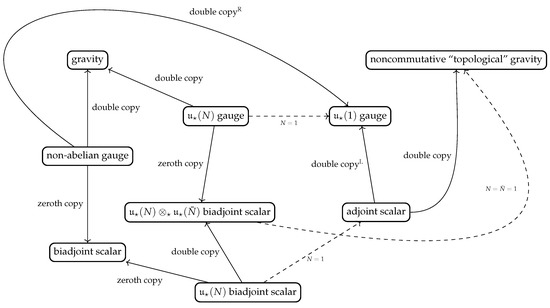
Figure 1
Open AccessFeature PaperReview
B Meson Decays in the Covariant Confined Quark Model
Symmetry 2023, 15(8), 1542; https://doi.org/10.3390/sym15081542 - 04 Aug 2023
Abstract
The aim of this text is to present the covariant confined quark model (CCQM) and review its applications in the decays of B mesons. We do so in the context of existing experimental measurements and theoretical results of other authors, which we also
[...] Read more.
The aim of this text is to present the covariant confined quark model (CCQM) and review its applications in the decays of B mesons. We do so in the context of existing experimental measurements and theoretical results of other authors, which we also review. The physics principles are, in detail, exposed for the CCQM; the other results (theoretical and experimental) are surveyed in an enumerative way with comments. We proceed by considering, successively, three categories of decay processes: leptonic, semileptonic and non-leptonic.
Full article
(This article belongs to the Special Issue Review on Quantum Field Theory)
►▼
Show Figures
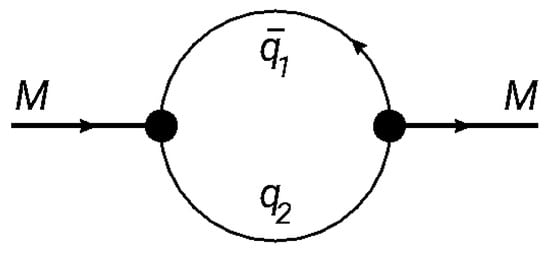
Figure 1
Open AccessArticle
An Efficient and Universal Real-Time Data Integrity Verification Scheme Based on Symmetric Key in Stream Computing System
Symmetry 2023, 15(8), 1541; https://doi.org/10.3390/sym15081541 - 04 Aug 2023
Abstract
The integrity of real-time data streams has not been solved for a long time and has gradually become a difficult problem in the field of data security. Most of the current data integrity verification schemes are constructed using cryptographic algorithms with complex computation,
[...] Read more.
The integrity of real-time data streams has not been solved for a long time and has gradually become a difficult problem in the field of data security. Most of the current data integrity verification schemes are constructed using cryptographic algorithms with complex computation, which cannot be directly applied to real-time stream computing systems. Aiming at the above issue, this paper adopts the Carter–Wegman MAC method, pseudo-random function and symmetric cryptography mechanism to construct the Real-Time Data Integrity Verification scheme based on symmetric key in stream computing systems (RT-DIV), which converts a one-time MAC to a multiple-time MAC and retains the advantage of security performance. Then, a security analysis is given under the standard model. Finally, experiments and data analysis are conducted in a simulated environment, and the experimental results show that the RT-DIV scheme can effectively guarantee the integrity of real-time data streams. Furthermore, the RT-DIV scheme lays the foundation for the secure application of the stream computing system.
Full article
(This article belongs to the Special Issue Symmetry Applied in Privacy and Security for Big Data Analytics)
►▼
Show Figures
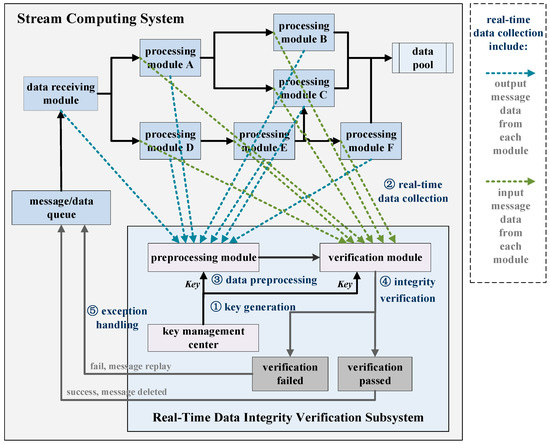
Figure 1
Open AccessArticle
Solution of Fractional Third-Order Dispersive Partial Differential Equations and Symmetric KdV via Sumudu–Generalized Laplace Transform Decomposition
by
and
Symmetry 2023, 15(8), 1540; https://doi.org/10.3390/sym15081540 - 04 Aug 2023
Abstract
This research work introduces a novel method called the Sumudu–generalized Laplace transform decomposition method (SGLDM) for solving linear and nonlinear non-homogeneous dispersive Korteweg–de Vries (KdV)-type equations. The SGLDM combines the Sumudu–generalized Laplace transform with the Adomian decomposition method, providing a powerful approach to
[...] Read more.
This research work introduces a novel method called the Sumudu–generalized Laplace transform decomposition method (SGLDM) for solving linear and nonlinear non-homogeneous dispersive Korteweg–de Vries (KdV)-type equations. The SGLDM combines the Sumudu–generalized Laplace transform with the Adomian decomposition method, providing a powerful approach to tackle complex equations. To validate the efficacy of the method, several model problems of dispersive KdV-type equations are solved, and the resulting approximate solutions are expressed in series form. The findings demonstrate that the SGLDM is a reliable and robust method for addressing significant physical problems in various applications. Finally, we conclude that this transform is a symmetry to other symmetric transforms.
Full article
(This article belongs to the Special Issue Various Approaches for Generalized Integral Transforms)
Open AccessFeature PaperArticle
Entangled Photon Anti-Correlations Are Evident from Classical Electromagnetism
by
and
Symmetry 2023, 15(8), 1539; https://doi.org/10.3390/sym15081539 - 04 Aug 2023
Abstract
For any experiment with two entangled photons, some joint measurement outcomes can have zero probability for a precise choice of basis. These perfect anti-correlations would seem to be a purely quantum phenomenon. It is, therefore, surprising that these very anti-correlations are also evident
[...] Read more.
For any experiment with two entangled photons, some joint measurement outcomes can have zero probability for a precise choice of basis. These perfect anti-correlations would seem to be a purely quantum phenomenon. It is, therefore, surprising that these very anti-correlations are also evident when the input to the same experiment is analyzed via classical electromagnetic theory. Demonstrating this quantum–classical connection for arbitrary two-photon states and analyzing why it is successful motivates alternative perspectives concerning entanglement, the path integral, and other topics in quantum foundations.
Full article
(This article belongs to the Special Issue Symmetry/Asymmetry in Circuits and Electrodynamics)
►▼
Show Figures
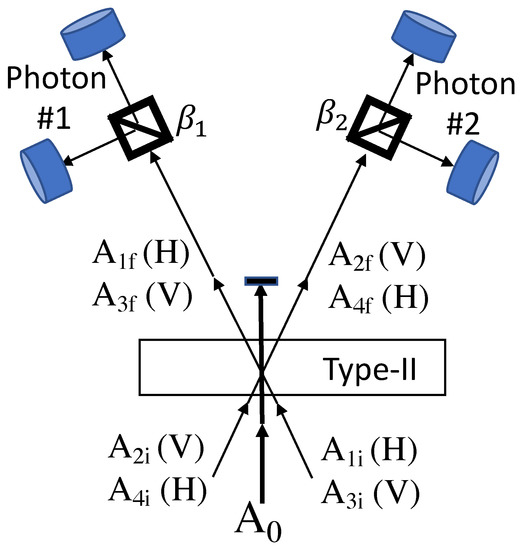
Figure 1
Open AccessArticle
Representations of Flat Virtual Braids by Automorphisms of Free Group
by
and
Symmetry 2023, 15(8), 1538; https://doi.org/10.3390/sym15081538 - 03 Aug 2023
Abstract
Representations of braid group
Representations of braid group
(This article belongs to the Special Issue Selected Papers of International Conference on Mathematical and Statistical Sciences: A Selçuk Meeting (Dedicated to Victims of Türkiye Earthquakes))
►▼
Show Figures

Figure 1
Open AccessArticle
Studying the Dynamics of the Rumor Spread Model with Fractional Piecewise Derivative
Symmetry 2023, 15(8), 1537; https://doi.org/10.3390/sym15081537 - 03 Aug 2023
Abstract
Sensitively altered news, commonly referred to as rumors, can lead an individual, organization, or nation astray, potentially resulting in harm, even to the extent of causing violence among large groups of people. In this digital age, news can be easily twisted and rapidly
[...] Read more.
Sensitively altered news, commonly referred to as rumors, can lead an individual, organization, or nation astray, potentially resulting in harm, even to the extent of causing violence among large groups of people. In this digital age, news can be easily twisted and rapidly spread through the internet and social media. It becomes challenging for consumers to discern whether the information they encounter online has been manipulated. Unfortunately, the rise of internet forgeries has facilitated the dissemination of false or distorted information by unscrupulous individuals, particularly on sensitive matters, to serve their own interests. Once a rumor is generated and made public on the internet, it quickly spreads through sharing and discussions by anonymous individuals, sometimes intentionally, without thorough fact-checking. In this manuscript, we investigate the dynamical model of rumor propagation in a social network using the classical Caputo piecewise derivative. We examine the existence and uniqueness of a solution for the aforementioned problem and analyze the equilibrium, stability, boundedness, and positivity of the model. To obtain the numerical simulation of the piecewise derivative, we employ various fractional orders, and the approximate solution of the considered model is found using the fractional piecewise numerical iterative approach of the Newton polynomial. This approach allows us to gain valuable insights into the dynamics of rumor propagation and its effects within a social network.
Full article
(This article belongs to the Special Issue Symmetry Analysis of Fractional Differential Equations with New Kernels)
►▼
Show Figures
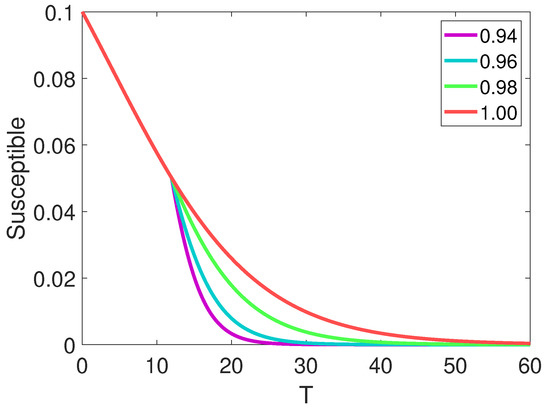
Figure 1

Journal Menu
► ▼ Journal Menu-
- Symmetry Home
- Aims & Scope
- Editorial Board
- Reviewer Board
- Topical Advisory Panel
- Instructions for Authors
- Special Issues
- Topics
- Sections & Collections
- Article Processing Charge
- Indexing & Archiving
- Editor’s Choice Articles
- Most Cited & Viewed
- Journal Statistics
- Journal History
- Journal Awards
- Conferences
- Editorial Office
Journal Browser
► ▼ Journal BrowserHighly Accessed Articles
Latest Books
E-Mail Alert
News
3 August 2023
Symmetry | Invitation to Read the 2023 Selected Papers in the Section “Mathematics and Symmetry/Asymmetry”
Symmetry | Invitation to Read the 2023 Selected Papers in the Section “Mathematics and Symmetry/Asymmetry”
1 August 2023
Symmetry | Invitation to Read the 2023 Editor’s Choice Articles for the Section “Computer Science and Symmetry/Asymmetry”
Symmetry | Invitation to Read the 2023 Editor’s Choice Articles for the Section “Computer Science and Symmetry/Asymmetry”
Topics
Topic in
Mathematics, Applied Sciences, Electronics, Healthcare, Symmetry
Recent Advances in Computational Optimization Techniques and Their Modern Applications for Smart HealthCare
Topic Editors: Mohd Dilshad Ansari, Mohd Fauzi Bin Othman, Jawad Rasheed, Mazdak ZamaniDeadline: 20 August 2023
Topic in
Algorithms, Applied Sciences, Mathematics, Symmetry, AI
Applied Metaheuristic Computing: 2nd Volume
Topic Editors: Peng-Yeng Yin, Ray-I Chang, Jen-Chun LeeDeadline: 31 August 2023
Topic in
Machines, Micromachines, Remote Sensing, Sustainability, Symmetry, Wind
Energy Equipment and Condition Monitoring
Topic Editors: Zhifeng Xiao, Bin Huang, Lida LiaoDeadline: 15 September 2023
Topic in
Axioms, Computation, Dynamics, Mathematics, Symmetry
Structural Stability and Dynamics: Theory and Applications
Topic Editors: Harekrushna Behera, Chia-Cheng Tsai, Jen-Yi ChangDeadline: 30 September 2023

Conferences
27 October–10 November 2023
The 4th International Electronic Conference on Applied Sciences (ASEC2023)

Special Issues
Special Issue in
Symmetry
QCD- and QED-Like Theories and Symmetry
Guest Editor: Maxim Yu. KhlopovDeadline: 15 August 2023
Special Issue in
Symmetry
Symmetric and Asymmetric Bimodal Distributions with Applications
Guest Editor: Héctor W. GómezDeadline: 31 August 2023
Special Issue in
Symmetry
Nonlinear Nano-Optics
Guest Editors: Thierry Verbiest, Branko Kolaric, Sébastien R. MouchetDeadline: 15 September 2023
Special Issue in
Symmetry
Modified Gravity Theories and Applications to Astrophysics and Cosmology
Guest Editors: Luis Acedo, Michael M. Tung, Golden Gadzirayi NyambuyaDeadline: 30 September 2023
Topical Collections
Topical Collection in
Symmetry
Symmetry in Ordinary and Partial Differential Equations and Applications
Collection Editor: Calogero Vetro












